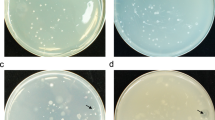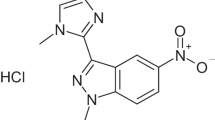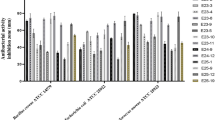Abstract
INDIVIDUAL strains of Serratia marcescens may liberate two different bacteriocins1. The distinction is made on grounds of temperature of inactivation and susceptibility to various other destructive agents coupled with distinctive spectra of activity. During an investigation of antibiotics produced by Serratia the foregoing phenomenon was also encountered and electrophoretic separation of the components was attempted. Strains, media and electrophoretic techniques were those previously used2,3. In addition, twenty strains isolated locally and numbered Sm 16–19 and Sm 37–52 were also investigated. All 51 Serratia strains could be differentiated on grounds of lysogenicity and phage susceptibility Antibiotic activity was detected by the method of Fredericq4 or by spotting the clear supernatants of overnight growths of cultures induced by ultra-violet light on plates freshly spread with indicator organisms.
This is a preview of subscription content, access via your institution
Access options
Subscribe to this journal
Receive 51 print issues and online access
$199.00 per year
only $3.90 per issue
Buy this article
- Purchase on SpringerLink
- Instant access to full article PDF
Prices may be subject to local taxes which are calculated during checkout
Similar content being viewed by others
References
Hamon, Y., and Peron, Y., Ann. Inst. Pasteur, 100, 818 (1961).
Prinsloo, H. E., and Coetzee, J. N., Nature, 203, 211 (1964).
Maré, I. J., Coetzee, J. N., and de Klerk, H. C., Nature, 202, 213 (1964).
Fredericq, P., Annu. Rev. Microbiol., 11, 7 (1957).
Mandel, M., and Mohn, F. A., Abstr. Eighth Intern. Congr. Microbiol., 26 (Montreal, 1962).
Author information
Authors and Affiliations
Rights and permissions
About this article
Cite this article
PRINSLOO, H., MARÉ, I. & COETZEE, J. Agar Electrophoresis of Antibiotics produced by Serratia marcescens. Nature 206, 1055 (1965). https://doi.org/10.1038/2061055a0
Issue date:
DOI: https://doi.org/10.1038/2061055a0



